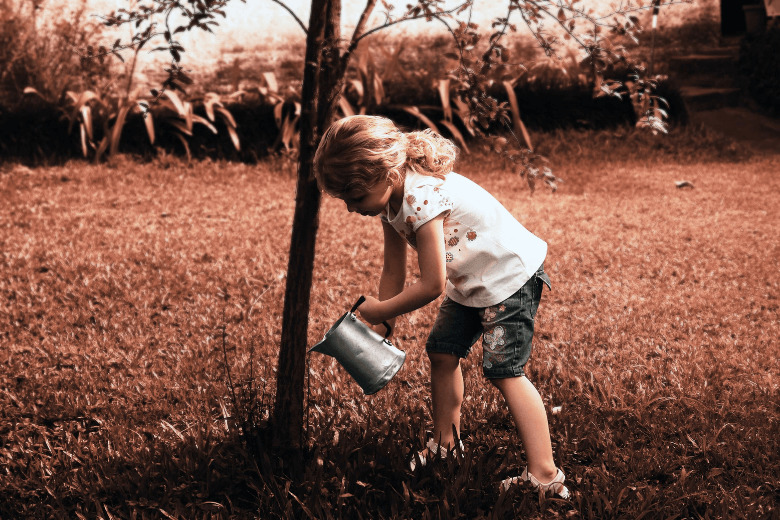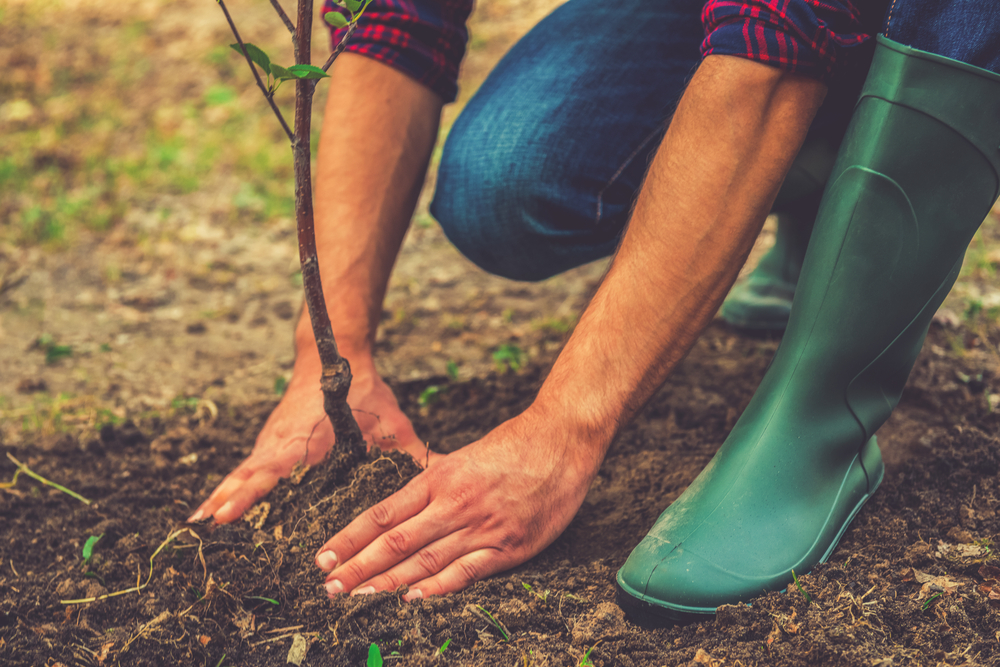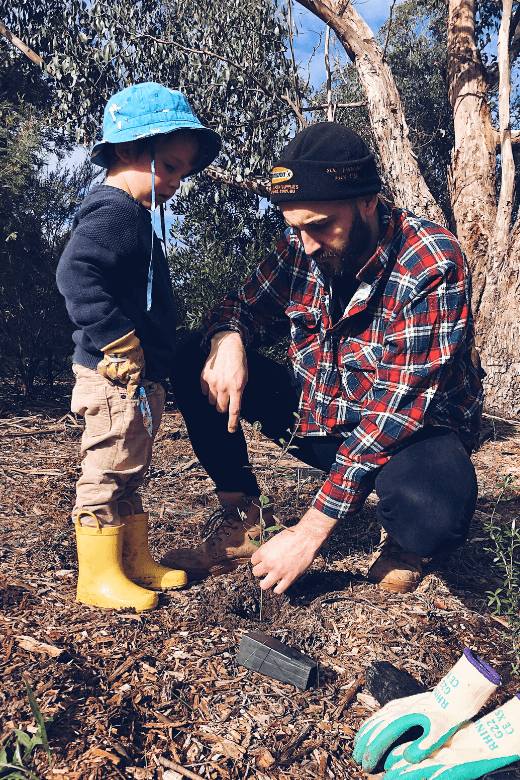Have you ever bought a houseplant and noticed that it looked a bit sad once you got it home? Maybe some of its leaves turned yellow or wilted or it even dropped leaves onto the table. What you witnessed was the plant adapting to its new environment and going through a bit of transplant shock while it did.
The same thing can happen with trees! Did you know that when it comes to trees there’s also something called tree transplant shock? It can occur when you plant a new tree in your yard.
When trees are planted, it is likely the most stressful event the tree will ever experience. They are dug up with big machinery, transported on a truck, and eventually planted into your yard. This is a lot of changes for one complex organism!
Every plant has a number of complicated physiological processes (we’ll save specifics for another day).
Changing their environment, like moving them from the nursery to your yard, profoundly affects these processes, resulting in stress to the tree.
And just like a human (or houseplant) moving into a new space, a tree also needs time to adapt to its new environment.
While adjusting to its new life in your yard, it goes through a period of transplant shock. Let’s dive into the signs of tree transplant shock, five common causes, and how to address them so you’re taking the best possible care of your new tree.
Symptoms of Transplant Shock
If you’ve recently planted a new tree on your property and you’re wondering if its experiencing transplant shock, here are some things to look for:
- Leaf scorch occurs when the area along the veins of the leaves or the outer edges of the leaves turn yellow and then eventually dries out and turns brown.
- Wilting, rolling or curling leaves are common when a tree is experiencing transplant shock.
- Dying leaves, even in the spring and summer, can sometimes be found on stressed trees after planting.
- Discoloration of needles in evergreens is a sign of stress. The ends of the needles turn brown and eventually die if the tree continues to be stressed.
- Reduced growth for the first several years after planting is a common result of transplant shock in trees.
5 Causes of Tree Transplant Shock
While a certain amount of transplant shock is to be expected in newly planted trees, there are some situations and practices that can exacerbate the severity.
Improper Planting
Unfortunately, many homeowners, landscapers and other professionals are not educated in how to properly plant a tree in order to set it up for optimal growth and a long, healthy life. Trees are often planted too deep, metal cages and burlap bags are left on the root ball, and planting holes aren’t created large enough to encourage the tree’s roots to spread out.
Lack of Root System
When trees are dug up from the nurseries where they’re growing they undergo a great deal of trauma. When they’re being removed from the field the machinery prunes their root system, often leaving a large chunk of it in the soil. This compromised root system will be reflected in the health of the tree canopy after planting.
Improper Watering
After planting, careful attention should be paid to watering your tree correctly. Too much water which will keep the soil saturated and not allow the trees roots to breathe. Too little water will stress the tree and cause more severe transplant shock.
Weather
Extreme weather patterns like drought, heavy rainstorms that produce flooding, very high or very low temperatures, snowstorms or other weather could affect the health of your newly planted tree.
Insects and Disease
Trees that are experiencing transplant shock are more susceptible to insect and disease damage since they’re not in optimal health.
How to Help Your Trees Become Established
Don’t be overwhelmed by the idea that your trees might be suffering from transplant shock. Luckily, there are several things you can do to help your tree grow into its potential, even during stressful times.
Choose the Right Tree for the Right Place
Setting your tree up for success begins before you start planting. Make sure the type of tree you want to grow is appropriate for the location in your yard.
Ensure Your tree is Planted Properly
If you’re not sure how to plant your tree the right way, higher a certified arborist to plant for you or consult a reputable source for information, like the Arbor Day Foundation.

Water Your Tree Correctly
Proper watering within the first year of planting your new tree is critical. Keep in mind that overwatering is just as dangerous as underwatering. What type of soil you have in your yard as well as the rainfall you receive will determine how often to water your tree.
In general, most landscape plants need one inch of water per week throughout the season. If you have dense soil you may need to water less and if you have very sandy soil you will likely need to water more often. Water can come in the form of rainfall or from your hose. Use a garden or soaker hose turned on very low and let the water infiltrate the soil over a period of 15-30 minutes depending on the flow.
Create a Mulch Ring Around Your Planting
Next to watering, mulching is arguably one of the best practices for keeping newly planted trees healthy. A thick layer of mulch decreases evaporation, keeps the roots cool in summer and warm in winter, decreases root competition from grass and other plants, and the mulch breaks down into organic matter that will increase the soil fertility.
There are really no downsides to mulching your trees! Read our post on how to mulch your trees (new and old) the right way.
Treat Your Trees with Nutrients
Encourage your trees to be healthy and vigorous with ECO’s natural nutrient and enzyme blend. In addition to helping your plants overcome transplant shock, the effects of many disease and pests can be lessened or potentially avoided when the tree’s immune system is bolstered ahead of infection.
Have an ECO Arborist inject the soil around your newly planted tree with natural nutrition and set it up for many years of success.
Overall, some tree transplant shock is normal. If you’re following the guidelines in this article and striving to help your planted trees adjust to their new home on your property you can expect your trees to recover and thrive long term. After about three years your trees will start to return to full growth and fill in normally as they fully recover from transplant shock.







